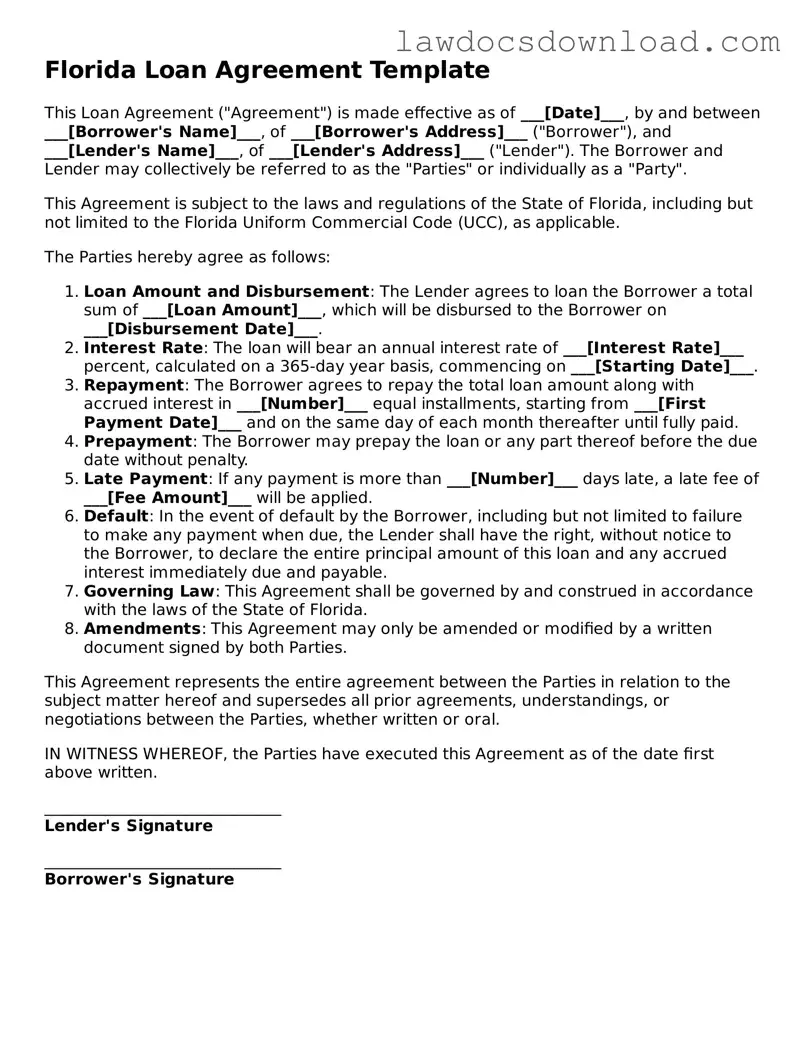One common mistake people make when filling out the Florida Loan Agreement form is not double-checking the accuracy of the information entered. This includes misspelled names, incorrect addresses, or inaccurate loan amounts. Such errors can lead to delays or legal issues down the line, undermining the trust and legal standing of the agreement.
Another frequent oversight is failing to specify the interest rate clearly. This lack of clarity can cause misunderstandings about the financial obligations expected from the borrower. It's critical to articulate whether the interest rate is fixed or variable and to detail how it's calculated and applied to the principal amount.
Many fail to outline the repayment schedule in a comprehensive manner. The agreement should include specific dates for payments, the number of installments, and what happens in the event of a late payment. Without this detail, managing and enforcing the agreement can become challenging, potentially leading to disputes.
Ignoring the inclusion of a clause regarding late fees or penalties for missed payments is a mistake. This omission can leave the lender without recourse to enforce penalties, making it difficult to manage late payments effectively. Clearly defining these terms upfront can help maintain a healthy lending relationship.
Overlooking the necessity to detail the loan's purpose is another common error. Specifying how the loan should be used can prevent misuse of the funds, ensuring that the borrower applies the loan to its intended purpose, which is particularly important for business or mortgage loans where the funds are meant for specific uses.
Some individuals neglect to include a prepayment clause. This oversight can lead to confusion or disputes over whether the borrower can repay the loan early and if any penalties apply for doing so. A clear prepayment clause protects both parties' interests.
Not stating what constitutes a default under the agreement is a critical mistake. This should cover scenarios beyond just missing payments, such as bankruptcy or failure to maintain insurance. Clearly defining default conditions ensures that both parties understand the severity and consequences of such actions.
Failing to identify collateral, if any, secures the loan, can be a significant oversight. For secured loans, detailing the collateral and what happens if the loan is not repaid is pivotal for the lender's protection.
A common error is not having the loan agreement witnessed or notarized, depending on the legal requirements. This step lends authenticity to the document and can be crucial in the enforcement of the agreement.
Last but certainly not least, many forget to have all parties involved sign the agreement. This might seem obvious, but it's a surprisingly common oversight that can invalidate the entire document. Making sure that everyone's signatures are on the loan agreement is fundamental to its enforceability.
